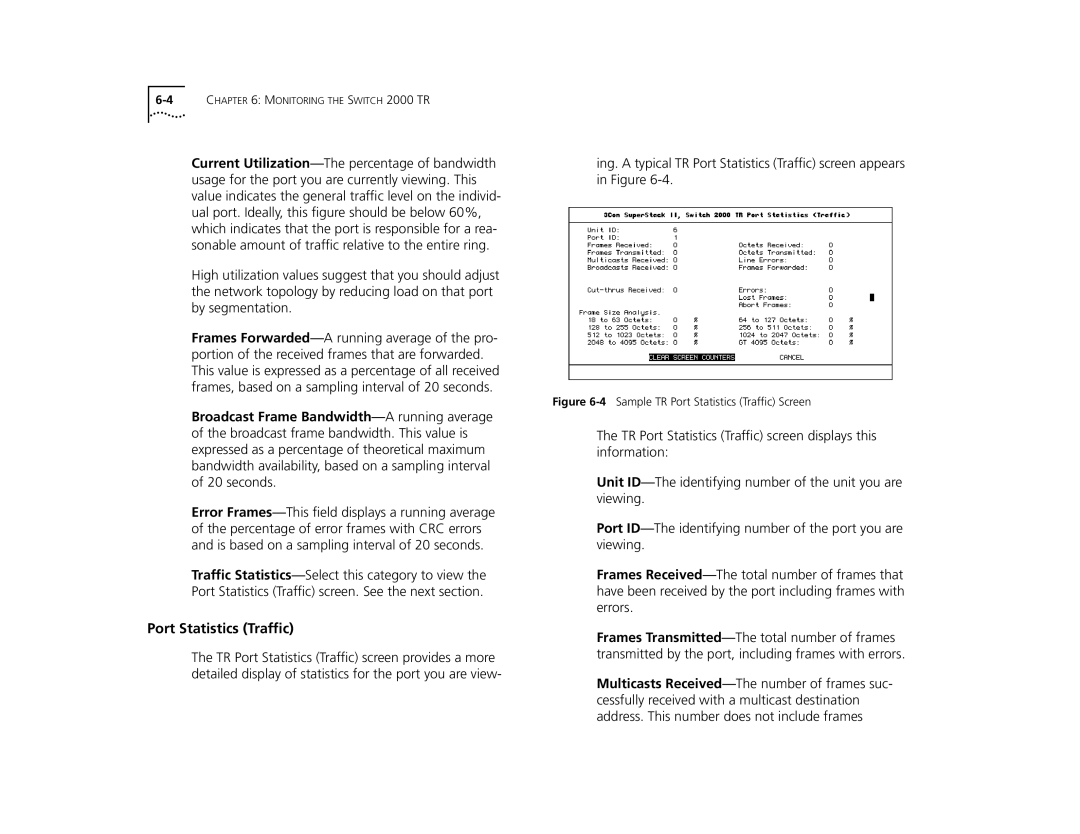
Current
High utilization values suggest that you should adjust the network topology by reducing load on that port by segmentation.
Frames
Broadcast Frame
Error
Traffic
Port Statistics (Traffic)
The TR Port Statistics (Traffic) screen provides a more detailed display of statistics for the port you are view-
ing. A typical TR Port Statistics (Traffic) screen appears in Figure
Figure 6-4 Sample TR Port Statistics (Traffic) Screen
The TR Port Statistics (Traffic) screen displays this information:
Unit
Port
Frames
Frames
Multicasts
